
There will be 317 million internet users in the US by 2023. If you run a business and don’t have a website, you are missing a lot of growth opportunities. As a fitness business, you’re the part of a growing industry that is catering to a much faster-growing market. More prospective customers are searching online for fitness services than ever before.
Your fitness business website is the hub of all your information and offerings. You want to direct all your prospective customers to the website so that they can get more information about your fitness business or buy your fitness services. Think about your website as a business asset that will pay you in the long run.
In this article, I’m going to share with you:
- The importance of having a website for your fitness business
- What it means for your website to be mobile-responsive (and why you should care)
- How to ensure your website is search engine optimized
- The five pages every fitness business website should have
- Some additional tips for fitness websites
Let’s dig in.
Shared vs owned channels
All of your social media marketing, ads, and public relations efforts are paid for, or you share those channels with other competitors. Also, when you use these channels, you are dependent on the channel. For example, If you post a new announcement about your fitness business on your Facebook page, less than 6% of your page followers will be able to see it on their newsfeed. Facebook’s organic reach is between 2% to 6%. In order to reach all your followers, you’ll need to do a sponsored post which will cost you money. You don’t have such limitations on your own website. It’s your channel that you control, just like your email marketing.
Your competitors are also sharing the space on social media channels. There is a probability that your prospects will also be seeing their posts and ads alongside yours.
The ultimate guide to your fitness business’s website, online marketing, and much more
Interested to learn about where your website fits into your overall marketing mix? Constant Contact has created a comprehensive health and fitness marketing guide for fitness business owners. The guide covers all the important aspects of online marketing and shares valuable insights on how to build a mobile-responsive, and search engine optimized website for your fitness business.
The health and fitness marketing guide covers the following topics:
- Understanding the change in health and fitness marketing trends
- How people are looking for fitness services online
- How to engage & convert prospects into customers with a content strategy
- Which marketing channels are good for your fitness business
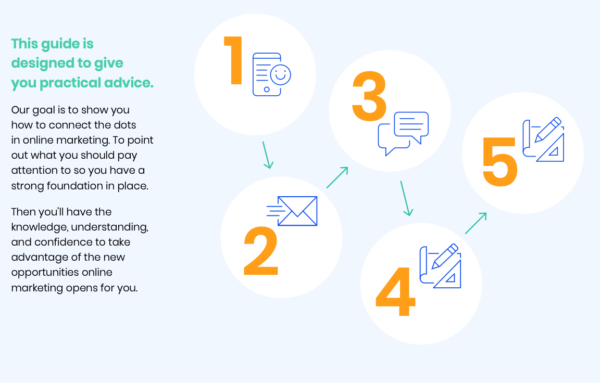
Align your website with your fitness business goals
Today, a website is an integral part of your business. Before you start developing your fitness business website, review your fitness business goals. A good example of this can be a fitness business that sells a fitness course delivered to customers at their homes. This type of business should consider ecommerce website platforms because the ultimate business goal should be to sell online courses.
If you are a personal trainer, you might want a simple five-page website that generates inquiries via web forms or helps visitors find your contact details.
Why a mobile-responsive website?
Having a website is just not enough. Your fitness business website should be mobile-responsive. A recent survey found that 52.2% of the worldwide online traffic came from mobile devices as compared to desktop. If your website is not mobile-responsive, you’ll lose business as users exit the website when the mobile experience is poor.
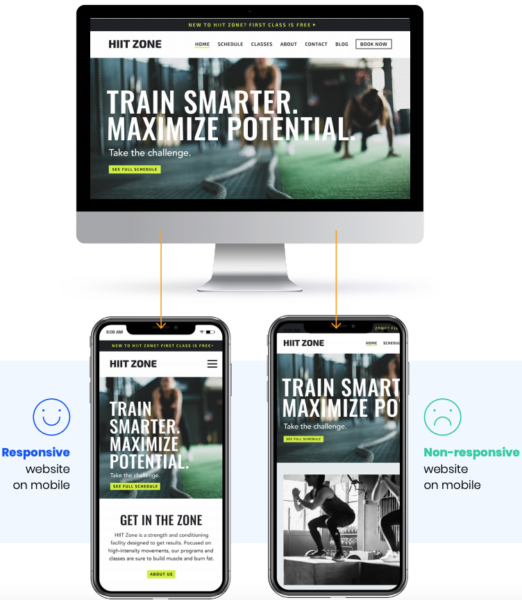
Mobile responsiveness means that your website adapts to the device being used to access it. The user, on any type of device, should be able to read the information easily, navigate through the website, and is able to take actions such as buying fitness services or sending inquiries via a web contact form.
The key aim of having a mobile-optimized user experience is to make the process of getting information and taking action on mobile devices as convenient as possible: The easier it is, the more likely your website visitors will be to take action and become customers or clients.
Why a search engine optimized website
Make sure that your website platform allows four you to easily implement search engine optimization (SEO). Google prefers websites with good load speed and user experience. Your website should load in under 2 seconds on mobile and desktop devices. The content on your website should have all the relevant keywords you want to be found for. For example, if you are a yoga studio in Brooklyn, New York, you should mention this keyword in your website’s text, and especially in headings, to demonstrate your relevance for those terms.
TIP: Learn more about keywords and search engine optimization (SEO)
Five pages every fitness business website should have:
People are looking online for answers to their questions. Make sure that your fitness business website pages answer the queries your prospects are searching online.
Based on our experience developing SEO-optimized websites, here are the five pages you should consider when developing or updating your fitness business website:
Homepage
Questions your Homepage should answer:
- What type of fitness business are you?
- What classes do you offer?
- Do you offer a trial class?
- What should visitors do next?
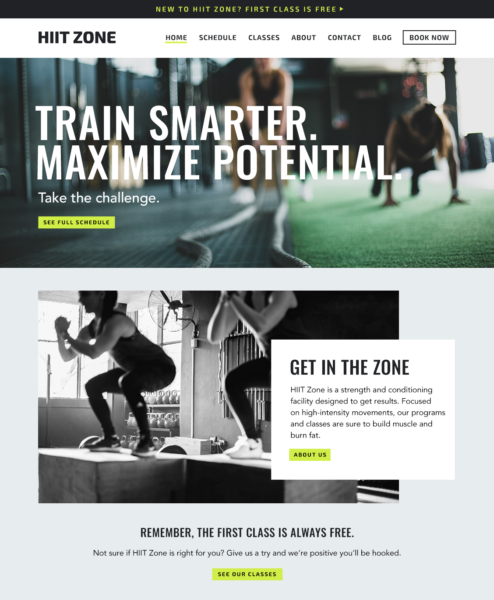
Schedule page
A Schedule page is not necessary for every fitness business. If you are a small personal training fitness business, you can share your availability on the Home page. For big and medium-sized fitness businesses, we recommend having a schedule page.
Questions your Schedule page should answer:
- What time and day do you offer your classes?
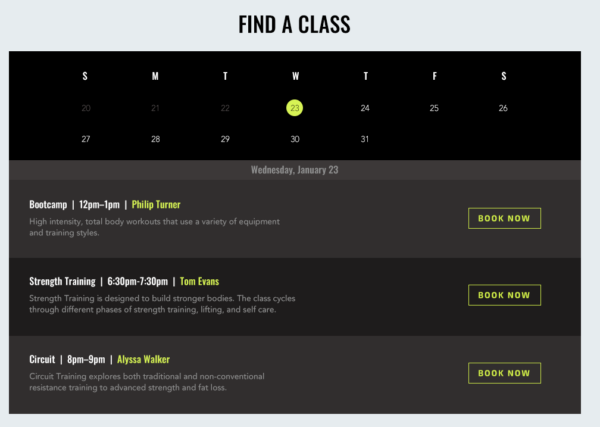
Classes page
Questions your Classes page should answer:
- What classes and sessions do you offer?
- Which class is right for me?
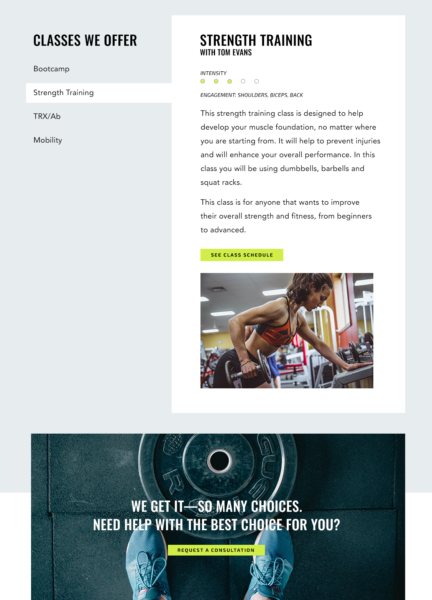
About Us page
Your About Us page should answer these questions:
- What is your story? Why did you open your fitness business?
- How has your fitness business helped customers?
- What type of physical location do you have?
- What makes you or your fitness business different from others?
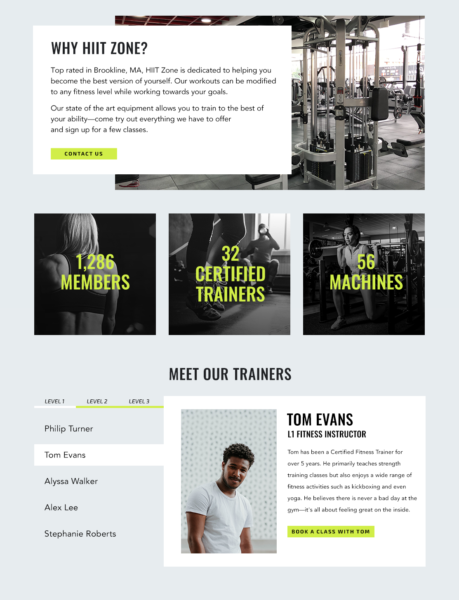
Contact page
The questions Contact page should answer include:
- Where can I find you?
- When can I reach you?
- How can I contact you?
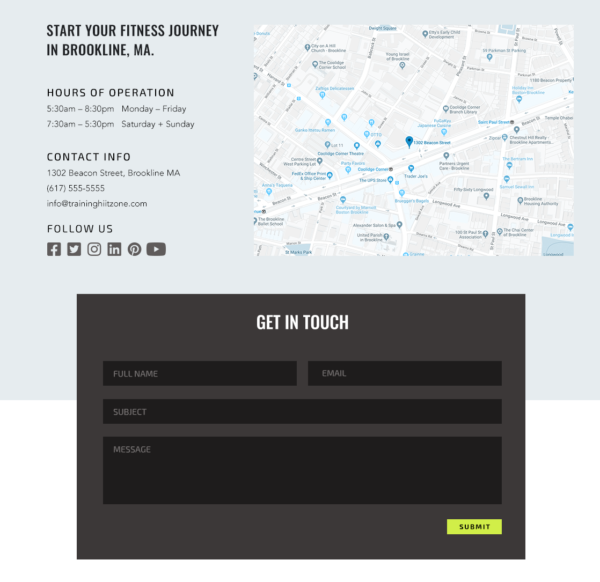
Other pages to consider
If you have a team of instructors at your fitness business, it would be a good idea to have an instructors page that has detailed bios of all the instructors. If you run special offers for new members, you can have a landing page for new member offers. You can also have a blog section on your website to share tips and showcase your expertise in your niche. Personal trainers can have a success stories page to share their clients’ fitness results.
Tips on sharing images on your fitness business website
Make sure that you use high-quality images on your website. You can take the help of a professional photographer to capture photographs of your fitness business and team. If you can’t do that, you can download royalty-free, high-quality stock images from Unsplash. You can also buy high-quality images online.
People like to get a feel of your fitness business looking at the images on your fitness business website. For better engagement on the website, we advise you to use high-quality images of your fitness business.
Calls to action for a fitness business website
It is unlikely that all the visitors who visit your website will immediately buy your fitness services. Maybe they are considering joining a gym next month or looking for a fitness studio in the area they are moving to. For the website visitors that are in the consideration phase of the sales funnel, you’ll need to collect their information so you can stay in touch with them.
Make sure that the “buy classes” call-to-action (CTA) is clearly visible and easy to execute on the website. When the user clicks the CTA they should easily buy your fitness services. The payment method, whether managed by your CRM or PayPal, should be seamlessly integrated into your website.
You can also retarget your website traffic on social media platforms. Retargeting will help you show the website visitors your ads, even after they’ve left your site to use their social media platforms.
Here are a couple of examples of CTAs for your fitness business website:
Subscribe to a newsletter
It is a good idea to have a newsletter subscription sign-up form on your website. You can then easily collect information from your website visitors, and build a subscriber list. You can engage with the visitors again by sending them emails about updates and special offers.
Try a free class
You can set up a pop-up for a free class subscription on your website’s Home page. This will help you collect emails of people who are interested in coming to your fitness studio or fitness business.
Lastly, create a digital ecosystem for your fitness business
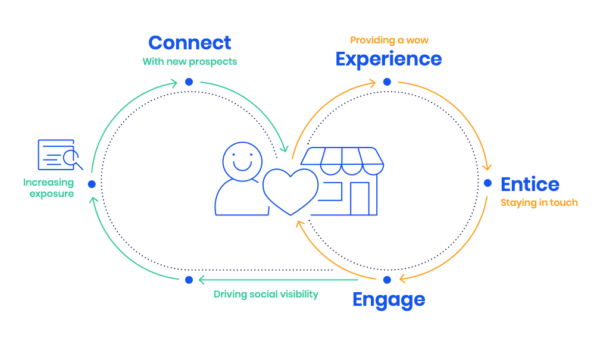
Your website is a central element of your fitness business’ marketing ecosystem. Make sure that you are directing visitors to your website from your newsletters, print materials, and social media campaigns. Consider creating a fitness survey to understand your customer’s needs on a deeper level.
When planning to develop a website for your business, consider your fitness business goals and strategies. Also, choose a platform that helps you easily maintain and update the website.




